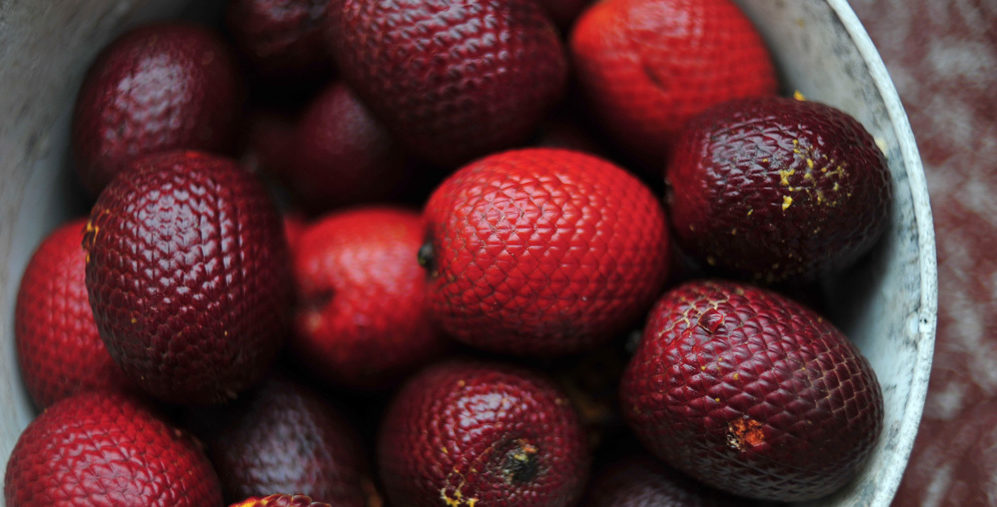“Loss of biodiversity means we have less opportunities,” says Christian Puglisi, sending off fireflies with his eyes.
A Danish chef of Sicilian-Norwegian heritage, he is an alumnus of the world’s famous Noma and runs several restaurants in Copenhagen, including the Micheline starred entirely organic Relæ. He also has a farm in Lejre, 40 minutes away from Copenhagen, where he experiments with food and its diversity. It is here where the famous creamy mozzarella he made from locally farmed raw milk came to be.
For Christian biodiversity is a celebration of creativity, innovation and craft. “There is nothing obvious about our curiosity, there is so much to discover, there are so many things we don’t know, and we haven’t experienced. Through exploring I realized there are things that deserve to exist, even thought they might not be extremely flavourful or exciting. Just because something exists in nature means it is part of what we need,” says Christian.
Increasingly more of us eat the same food, increasingly more farmers around the world are growing the same crops. The statistical trends look quite droll: we used to farm and eat over 5000 crops, we now mainly use 12 plant and 5 animal species. Loss of wild animal species and insects follow along.
For many, less insects only means less job washing their wind shield. Indeed, human mind has hard time grasping swelling biodiversity loss statistics. Meanwhile, the decline in our food diversity translates into lower quality of life. It means worse nutrition, poorer health and thinner food security base.
Unification of the food system also reinforces social inequality: global food system is dominated by only a handful of players – giants that are impossible to compete with if you are a small-scale producer. That is also how many indigenous and traditional foods are disappearing. Before we know it, we may strip our cultural heritage, in the name of convenience, loosing invaluable knowledge, essential to sustainability.
The question is how we get the talk about food diversity beyond the wealthy consumers who can afford to enjoy high-end gastronomy and elitist food hobbies? How do we make better food affordable?
“And that is where food system centralization and unification really come into play. Powerful big players use food varieties that are the most convenient for globalized supply chains, prioritizing breeds that handle transportation and storage best. It reduces availability of other varieties that are often farmed by small-scale local producers. It also makes them more expensive, because farmers have to ask for a higher price to stay in business,” reflects Christian.
He then continues: ”At the same time, we must remember that everybody has the right to health and quality of life, and food is how we can obtain that.”
At the Terra Madre Nordic 2018 I tried many surprising locally produced foods. I was wowed by Icelandic bullion made from bone marrow and other parts of the lamb that would have been wasted otherwise. I loved the whisky flavoured mustard and salt with Icelandic thyme. I snacked on Sami’s suovas, the cold smoked reindeer meat, and I saw that the Finns make pasta from rye. I learnt that Norway has a bustling seaweed food production, they even add it to cheese.
These are only a few of the exciting products and ideas from one region of the world, without any mention of the opportunities that food biodiversity holds for development of bioeconomies.
Action on the ground among farmers and chefs is very important, but it can only go so far without support from policy. Creating enabling environment for small-scale producers who specialize on food biodiversity, making it easier for them to succeed in their business could be very impactful.
A lot of legislation, particularly in industrialized economies, focuses on protection of large players and industries, like the pork industry in Denmark, which is heavily subsidized. Perhaps, it is time to reconsider these policies, favoring biodiversity, leveling the playing field for local small and medium businesses: “Just let us do it!” calls Christian Puglisi.
On the consumer side, appreciating biodiverse food and talking about it with others is the first step. Consumer demand has also an ability to push for change in policy. In a way, in an industrialized world with a centralized and unified food system, harnessing food biodiversity is an expression of freedom.
With all the wicked problems we need to resolve to achieve sustainable development, it is obvious we have to focus our action on the points that will have the highest impact. Getting it right with food would be a step forward on all of the SDGs, continuous innovation will be a big part of this solution. There is no doubt, food biodiversity provides an endless well of ideas and inspiration for creating these innovations. And, vice versa, biodiversity loss narrows down the possibilities we have to discover these solutions. It reduces our chances of success.
Reporting by Ekaterina Bessonova, Communications Officer, SIANI. This blog is based on a conversation between Christian Pugliesi with Dan Saladino of the BBC Food Programme at the Terra Madre Nordic 2018 event in Copenhagen. The conversation was made possible by the Nordic Food Policy Lab.
